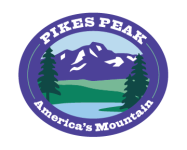Pikes Peak - America's Mountain offers a variety of activities, wildlife and spectacular views. There are health concerns and weather concerns associated with the ascent to 14,115 feet in elevation. Please take a couple minutes to review the following health and weather tips.
CAUTION: If you have a history of severe cardiac or respiratory problems, it is not recommended that you make the ascent to the summit. It is NOT recommended that infants under the age of 6 months make the ascent to the summit. The thinner air at the summit makes it difficult to breathe. Contact your pediatrician if you have any questions or concerns regarding your infant's visit to Pikes Peak.
What to Know
Be Prepared for the Weather on the Summit
It's colder up there than it is down here!
Summit Forecast Current Summit Weather Conditions Live Summit Cameras
Altitude Sickness
- Symptoms include headache, dizziness, weakness, poor appetite, nausea, impaired judgment and in extreme cases severe shortness of breath caused by pulmonary edema.
- The only real treatment is retreat to lower altitude.
- Do not hyperventilate: Short, shallow breathing can make you pass out.
Hypothermia
Also called "exposure", begins when the body starts losing more heat than it generates. Two things contribute to this: inadequate food and lack of warm, dry clothing. The condition affects the brain, so victims show poor judgment about saving themselves. The best defense is to change into dry clothing and try to get the body's core temperature up by drinking something warm. Recovery may take six to eight hours so be patient. If you have a sleeping bag double up with someone to aid in warming the body. Build a fire to help warm up if you are able. Remember nourishment, dry clothes and warmth.
Icy Conditions
Caution, icy or slippery conditions may exist year-round. Use caution walking on icy sidewalks or on trails or rocks.
Lightning Safety Tips
Your safety is the first priority. Lightning is dangerous because it is random and unpredictable. Please read, learn and teach others the following lightning safety tips. Be prepared to act quickly. When you first hear thunder, begin to plan your lightning defense. Can you get to a car or building quickly? Can you get 100 yards away from all metal objects? Lightning often precedes rain, so do not wait for the rain before suspending activities. Typically, the distance from Strike A to Strike B to Strike C can be 0.5 - 2.5 miles. Plan your evacuation and safety measures.
If Outdoors
Avoid water. Avoid all metal including electric wires, fences, golf clubs, machinery, motors, power tools, etc. Unsafe places include golf carts, tents, open-sided rain shelters, small boats, or underneath isolated trees. Avoid high ground and open space. Where possible, find shelter in a building or in a fully enclosed metal vehicle such as a car, truck or a van with windows completely shut. If lightning is striking nearby, you should:
- Avoid direct contact with other people
- Remove all metal objects from your person
- Crouch down, with feet together and hands on knees.
- Stay off ridges; lightning usually strikes the highest point or peak, lone tree, cliff edges, caves high in cliffs or simply the largest object in a flat area.
- If you are caught in a storm, retreat from high ground and wait until it passes. If you find yourself trapped in an exposed area, crouch down with your poncho forming a tent and wait the storm out.
If Indoors
Avoid water. Stay away from open doors and windows. Hang up the telephone and take off headsets. Lightning may strike electric and phone lines and induce shocks. Turn off and stay away from appliances, computers, power tools, TV sets, etc. Remain inside until the storm has passed. If a nearby person is injured from lightning, give first aid procedures if you are qualified to do so. An injured person does not carry electrical charge and can be handled safely. Call 911 or send for help immediately.
Animals: Don't Kill Them With Kindness!
You can help the wild animals by not feeding them. "Can one chip hurt?" Absolutely! When multiplied by 2,000 visitors per summer day. Then when the summer is over the animals are without their junk food fix. Even "healthy" foods like grapes, can cause problems. A squirrel may store your handout with its winter food supply. If the grape turns moldy, it could ruin the animal's cache of food. For your own safety, it is best not to feed wildlife. Mammals may have fleas that carry diseases like the bubonic plague. Ground squirrels may accidentally bite the hand that feeds them. For everyone's benefit, enjoy the wildlife by just watching or photographing them.

